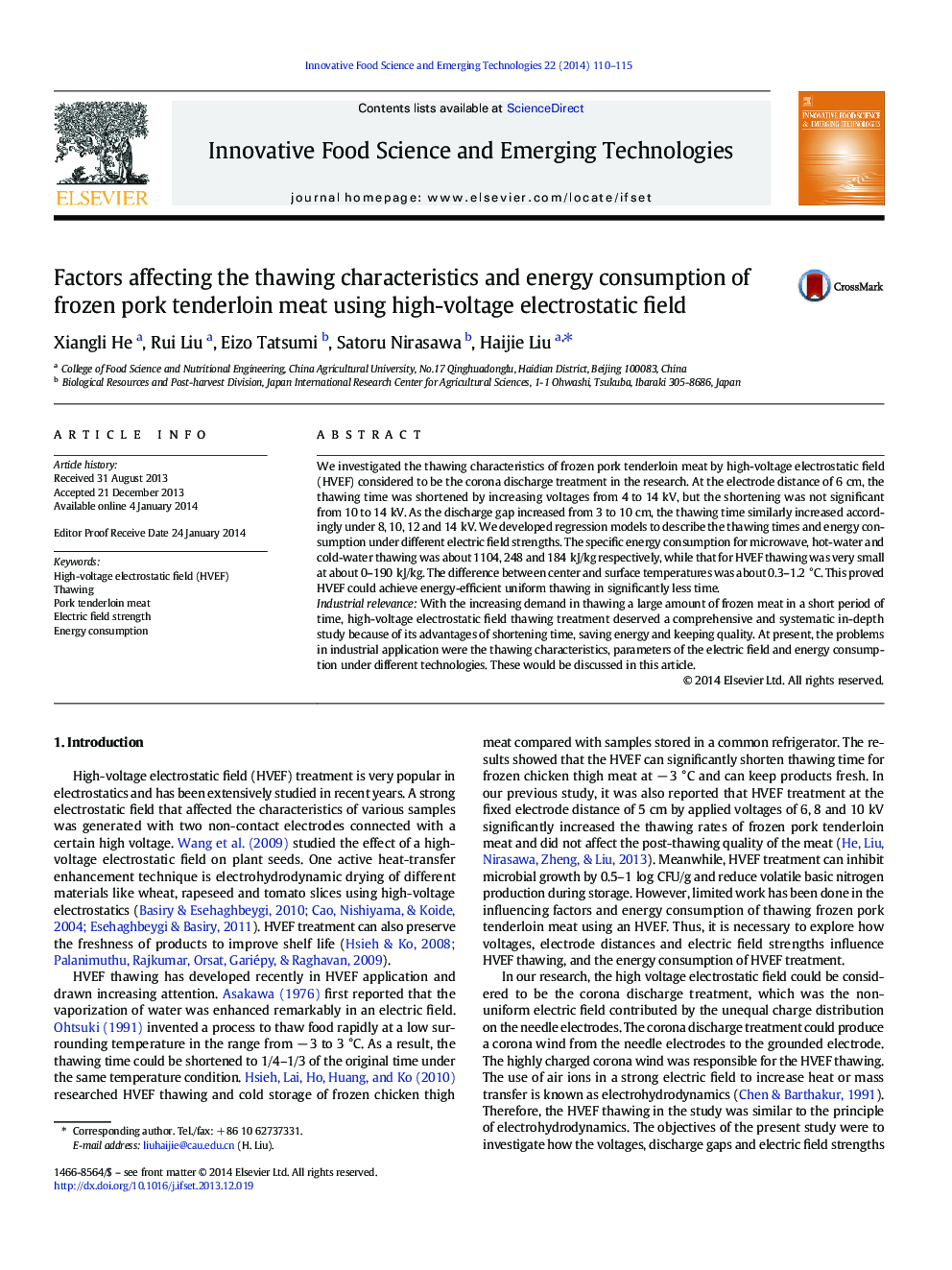| Article ID | Journal | Published Year | Pages | File Type |
|---|---|---|---|---|
| 2086626 | Innovative Food Science & Emerging Technologies | 2014 | 6 Pages |
•The thawing time was shortened by increasing voltages from 4 to 14 kV under 6 cm.•The thawing time increased accordingly as distance increased from 3 to 10 cm.•We developed regression models to describe thawing times and energy consumption.•We compared the power needed for HVEF, microwave, and hot-water and cold-water thawing.•The differences between the center and surface temperatures of meat were very small.
We investigated the thawing characteristics of frozen pork tenderloin meat by high-voltage electrostatic field (HVEF) considered to be the corona discharge treatment in the research. At the electrode distance of 6 cm, the thawing time was shortened by increasing voltages from 4 to 14 kV, but the shortening was not significant from 10 to 14 kV. As the discharge gap increased from 3 to 10 cm, the thawing time similarly increased accordingly under 8, 10, 12 and 14 kV. We developed regression models to describe the thawing times and energy consumption under different electric field strengths. The specific energy consumption for microwave, hot-water and cold-water thawing was about 1104, 248 and 184 kJ/kg respectively, while that for HVEF thawing was very small at about 0–190 kJ/kg. The difference between center and surface temperatures was about 0.3–1.2 °C. This proved HVEF could achieve energy-efficient uniform thawing in significantly less time.Industrial relevanceWith the increasing demand in thawing a large amount of frozen meat in a short period of time, high-voltage electrostatic field thawing treatment deserved a comprehensive and systematic in-depth study because of its advantages of shortening time, saving energy and keeping quality. At present, the problems in industrial application were the thawing characteristics, parameters of the electric field and energy consumption under different technologies. These would be discussed in this article.
